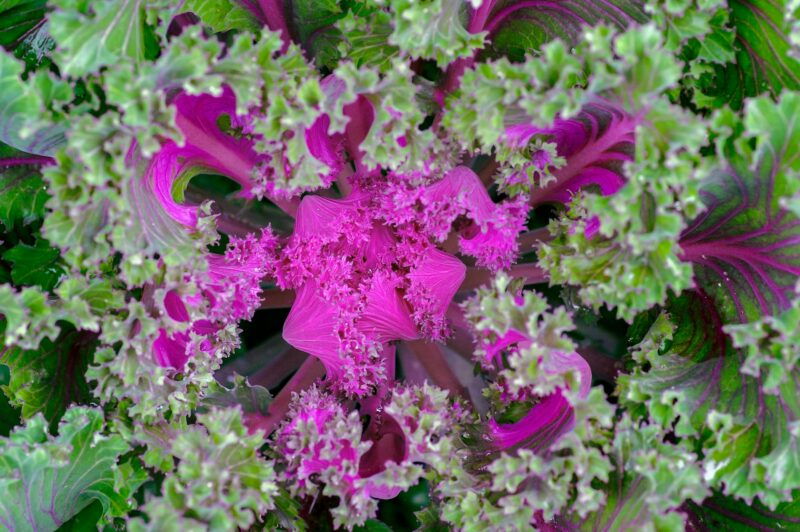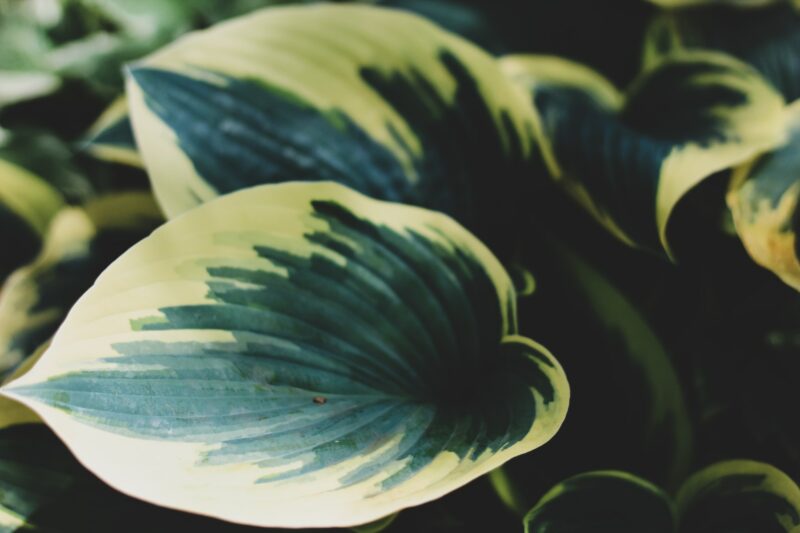
Ornamental cabbage and kale (Brasica oleracea) are beautiful plants that can withstand cooler temperatures in the fall and winter. They have beautiful flowers that bring color in the paler seasons, but these plants also have strikingly beautiful leaves.
Ornamental cabbage is part of the kale family. They both have green foliage with beautiful rosettes as flowers. The flowers can be from whites, purples, pinks, and even reds. Neither are edible, because both are grown for design, and so they are quite bitter and are instead used as meal garnishes. (However, it can actually be consumed after double boiling or after quickly sautéing in olive oil.) The cabbage leaves are flat, more broad, and have smooth edges that form a head. Meanwhile, kale leaves have more frilly and serrated leaf edges and form rosettes. They can be as small as 6 inches tall or grow almost to 3 feet tall.
They are best placed in the garden to replace summer plants or as edgings, in front of a border, or in mass plantings. They are also beautiful paired with other plants that are hardier and can tolerate colder weather, such as snapdragons, petunias, pansies, and chrysanthemums. These plants ca also be grown in pots or window boxes and be kept as such for naturally accenting the garden.
Care tips for ornamental kale and cabbage
Cold weather makes for a thriving environment for ornamental cabbage and kale. Colder nighttime temperatures allow the colors to develop because chlorophyll production is reduced. Even better, they can survive freezing temperatures of up to -15 degrees Celsius. Plants can be initiated as transplant seedlings or from seeds. When choosing transplants, select the size that you need for your garden, as plants taken from the nursery are not likely to grow much larger. Refrigeration can be used for germination, although these plants do not develop colors when indoors.
It is also important to note that these plants prefer soil that drains well and is organically rich, with a slightly acidic pH. They should also be planted under full sun exposure, unless they are planted in warmer climates, in which some partial afternoon shade is best. When planting them, it is also best to keep around 1.5 to 2 feet between plants to maximize airflow. Mulch can also be added to ensure that moisture is retained. Watering to about 1 inch of water is perfect, and overwatering should be avoided. Fertilizer can be added every 4-6 weeks until the plants reach full maturity. In addition, pruning is not normally necessary, although it is important to remove brown or yellow leaves that may develop after excessive rain or frost.
Some common pests for these plants include cabbage worms, aphids, and slugs. However, because they grow in colder weather when pests and diseases are not too frequent, ornamental kale and cabbage tend to be healthier. Should you have them, hard water sprays should be able to dislodge these pests.
Another undesirable trait that these beautiful plants may have is that sometimes, depending on growth conditions (soggy soil, for example) the cabbage or kale and shoot a sparse and tall stalk. This process is called bolting and is what happens when this plant when it flowers. However, should this happen, seeds can be collected to plant for next season.
Have any more questions about ornamental cabbage and kale? Give our team a call at Likas Landscaping, and we’ll be there to make your garden beautiful again.



